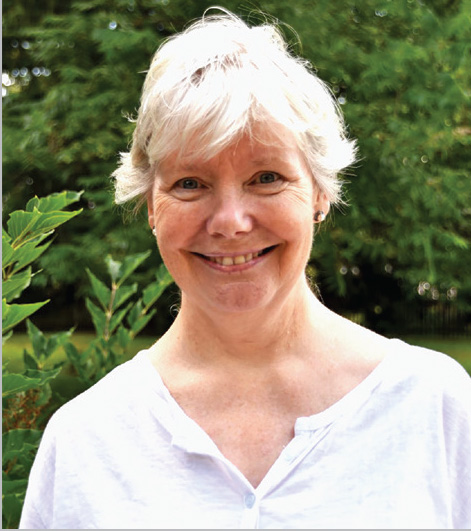
TONI ELLIS
ELORA – Trees.
We may curse them in the fall when we’re raking leaves, but if there’s one thing the pandemic has taught us, it’s the value of trees, says Toni Ellis.
“People have been spending more time outdoors during the pandemic,” Ellis said in a phone interview, “and they’re really seeing what trees do for us.”
Trees are the focus of the Elora Environment Centre (EEC) these days, where Ellis is coordinator of the urban tree program and a founding board member.
The organization formed in 1993 with a focus on energy conservation.
Ellis said the government of the day was offering grants to homeowners who installed energy-efficient features to their homes and the centre conducted home energy audits to help people zero in on what was needed to make their homes energy-efficient.
When government programs stopped, the EEC turned its focus to trees and in 2006, developed the Neighbourwoods program.
“Trees are a passion of mine,” Ellis said, “and the first thing we did was partner with Centre Wellington Hydro and public works and replaced the ailing spruce tree at the municipal hall.”
That tree gets lit up at Christmas and 15 years later stands a beacon for Ellis of what trees add to a community, and what a community can do for trees.
Trees not only provide shade in summer and cut the wind in winter, they also add monetary value to a home and can improve physical, mental and emotional health by spending just 15 minutes in a wooded area, she said.
And of course, they clean the air, store carbon dioxide and create oxygen.
So, the EEC started several tree-related projects including Neighbourwoods, where community volunteers work with professionals to conduct an inventory of trees in Centre Wellington, which it has been doing since 2009.
“You can’t manage them if you don’t know what you have,” Ellis said, adding volunteers record each tree’s species, location, height, crown width and trunk diameter as well as three indicators of the overall health of the tree.
“We’ve documented 11,000 trees over the years and identified species, size and health of the trees. It’s very helpful to know this, especially since we want a diversity of trees,” she said.
The program is only counting trees on municipal property – parks, boulevards, and front lawns up to property lines – and the information will be aggregated on the EEC website www.eloraenvironmentcentre.ca.
The municipality also uses the information as it plans what trees to plant in new parks, for example, or as it replaces dying trees.
With road salt, underground utilities, roads, and construction, “there are challenges for urban trees they don’t have in the forest,” not to mention threats like the emerald ash borer and the gypsy moth, Ellis said.
“The more we take care of our trees, the better our inventory will be.”
She said it takes 280 little trees to match the benefits of one big tree and through the EEC’s Tree Trust program, volunteers, along with an arborist, spend some time on the big trees, taking out dead wood and pruning the height to help them survive the conditions around them.
They also plant two new trees near the ‘mother’ tree so they can get a start and take over when the old tree has to come down.
“What’s exciting about this is that we’re saving big trees and five other communities have adopted our model,” she said.
Ellis said their programs are fun and engaging for volunteers and garner a lot of interest from the general public when teams are at a site measuring trees.
The EEC usually holds Tree Talk and Tree Walk events but those have been cancelled due to the pandemic.
But people are welcome to call with tree questions, Ellis said.
Her parting advice is to water trees slowly and deeply during dry spells around the drip line and not necessarily near the trunk. And don’t pile mulch too high around the base of a tree.
“You want doughnuts, not volcanoes,” she said.
Visit www.eloraenvironmentcentre.ca for more information.



